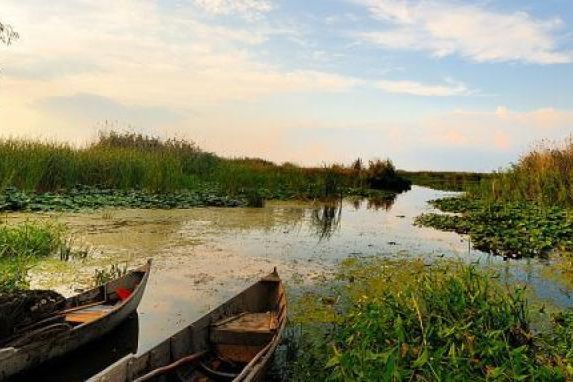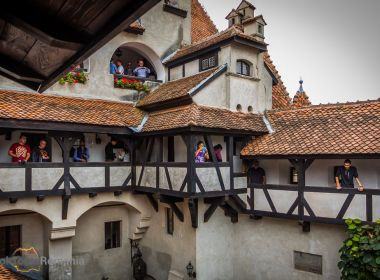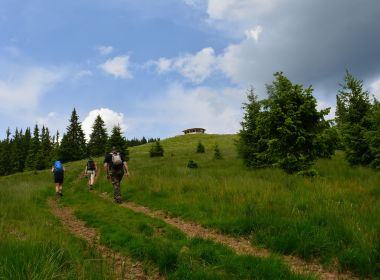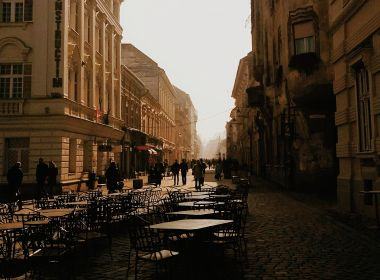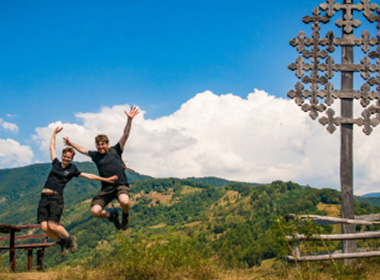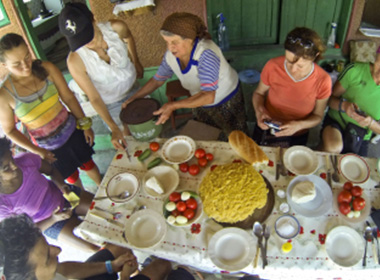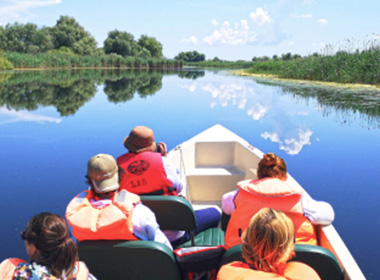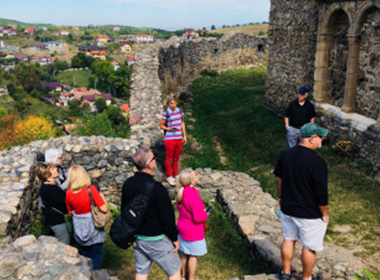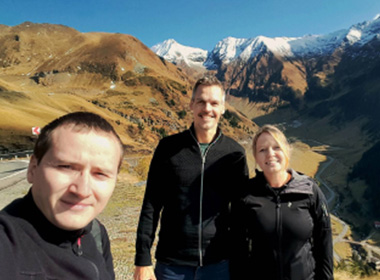Danube Delta, Romania: 15 Things to Do & Travel Tips | 2025
Whether it's for the Danube Delta cruises, for the remote fishing villages, the many bird colonies you can discover, or for a special treat for your taste buds when you try the special cuisine of the Danube Delta region, there are many reasons to come and visit this part of our country.
The Danube Delta biosphere is the third-largest biodiversity reserve in the world after the Great Barrier Reef and Ecuador's Galapagos Island. It's a fascinating destination for foreigners and locals alike, and any world traveler enthusiastic about nature and wetland sceneries should check it off their travel list.
In this article you'll find out what makes this region special, things to do and how to plan your visit - all "peppered" with lots of practical tips from locals, as the delta is still wild and mostly untouched by modern tourism!
Related: 30 Things Romania is Most Famous For .
Table of contents
- Why should you visit the Danube Delta?
- Cruise on the Danube River into the unique delta wetlands
- Planning a trip to the Romania Danube Delta
- When is the best time to visit the Danube Delta region
- Important rules to keep in mind when visiting this area
- Rule no. 1: Respect the nature
- Rule no. 2: Navigate responsibly
- Rule no. 3: Fish only in designated areas
- Rule no. 4: Do not camp in visitation areas.
- Rule no. 5: Keep your distance from protected areas
- Places to visit in the Danube Delta
- Birds and vegetation in the Danube Biosphere Reserve: Home to globally threatened species
- Wild sceneries in the largest remaining natural wetland
- Wildlife in the Danube Delta
- Conservation efforts
- A unique local culture and cuisine
- Safety and precautions
- Accommodation and dining
- Where the Danube meets the sea
- Discover the Tulcea mainland
Why should you visit the Danube Delta?
The Danube Delta is a unique and fascinating region in Eastern Europe, where the mighty Danube River meets the Black Sea. As the second-largest river delta in Europe, it covers an area of approximately 4,152 square kilometers (1,603 square miles).
It is home to diverse ecosystems including wetlands, dry and riverine forest areas, climax forests, coastal lagoons, and grasslands. Flooding and natural grazing were the main landscape-forming processes. This vast expanse of natural beauty is a vital habitat for hundreds of bird colonies including many globally threatened species such as the Dalmatian pelican and the pygmy cormorant, besides the many plant and animal species.
A geographical marvel and a sanctuary for rich biodiversity, the Danube Delta ecosystem is one of the many compelling reasons to visit Romania. Located at the intersection of the Palaearctic and Mediterranean biogeographic zones, this unique ecosystem is a must-visit destination for nature enthusiasts and wildlife lovers.
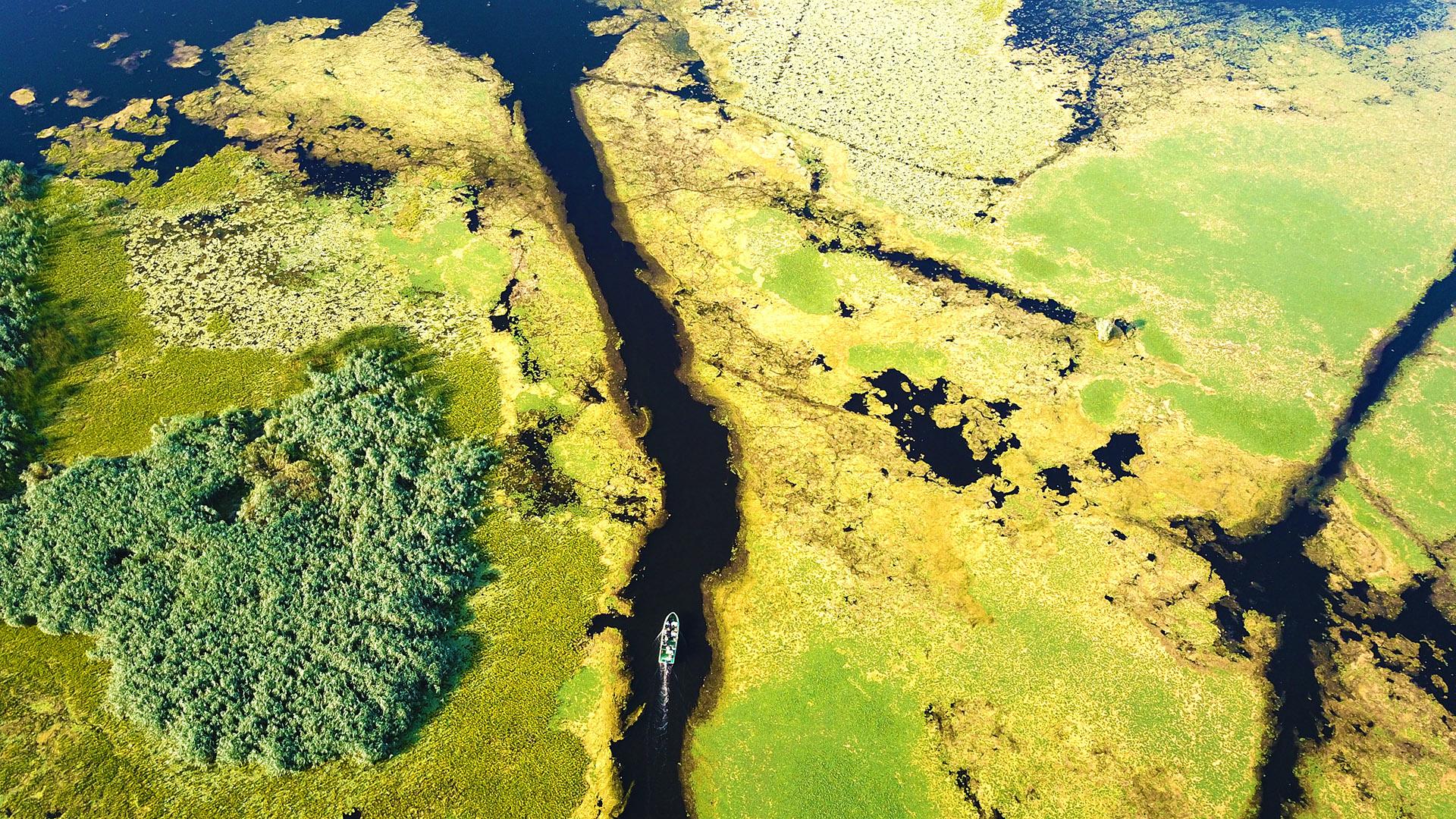
Cruise on the Danube River into the unique delta wetlands
After a 2860 km journey (the entire Danube River) streaming from the Black Forest mountains in Germany, passing through ten countries and four capitals, the mighty Danube River reaches its final destination: the Black Sea.
The Upper Danube is in Germany and Austria, while the Lower Danube is in Romania, Moldova, and Ukraine.
Before its waters become part of the sea, the Danube creates one last natural miracle: the Danube Delta, Europe's largest remaining natural wetland. The 5800-hectare delta is Europe's most extensive continuous marshland and the largest area with reed beds and floating islands of reed on Earth!
Romania and Ukraine each have their share of the Danube Delta, and each country is responsible for administering its section and preserving the dynamic natural ecological processes such as natural grazing. The Romanian part is far bigger, with 3,446 km2 (1,331 sq mi) out of 4,152 km2 (1,603 sq mi). Most of the Danube Delta lies in Romania, connecting to the Razim–Sinoe largest lakes complex, which enhances its environmental importance.
The Danube splits into three main distributary channels or arms before spilling into the Black Sea: the Chilia, Sulina, and Sfântu Gheorghe which are used for maritime navigation. The Sfântu Gheorghe branch is the oldest and most sparsely populated.
The Delta itself comprises a series of communicating narrow channels that can only be crossed by small boats, and many lakes where birds like to nest.
- You can book a Danube cruise through Romania that lets you explore the part of the river that flows through the country, from the Danube Gorges and the Iron Gates to the Danube Delta.
Planning a trip to the Romania Danube Delta
Together with the seaside resorts in Constanta county, the Delta and the Danube’s journey into the Black Sea make up the Romanian Black Sea coast. Stretching over 245 km, the many Romanian Black Sea resorts cater to everyone's tastes: family, luxury or party holidays. It's also a great choice for a family holiday in Romania.
It is one of the most important tourist attractions in Romania and a major Romanian national park.
A boat is the best - and only! - way to get around the delta. This is not only because of the very narrow canals that make it impossible to cross with large ships but also because, as a Unesco World Heritage Site, it must remain unspoiled for fish, hundreds of species of birds, aquatic plants, and the entire biosphere. So only slow boats are allowed going at max 40 km/h (25 mph).
The small town of Tulcea is typically the entry point into the Delta, but don't expect any ground transport from here on out. You can find lots of locals willing to rent their boat and "show you around" on a cheap day trip, but you have to be careful about 3 things:
- their boat may
not be safeor adequate for visiting the Delta (eg. speed boats are not allowed and you risk a fine) - boat drivers are
not guidesanddon't speak English- so you won't learn much from them! - while it may seem cheaper, you won't get any value for your money or time spent
For our Danube Delta trips we work only with specialist licensed guides who know the area well and can tell you about the birds and sights you'll see. If I would go on a safari trip in Africa I wouldn't take a guide from the city...
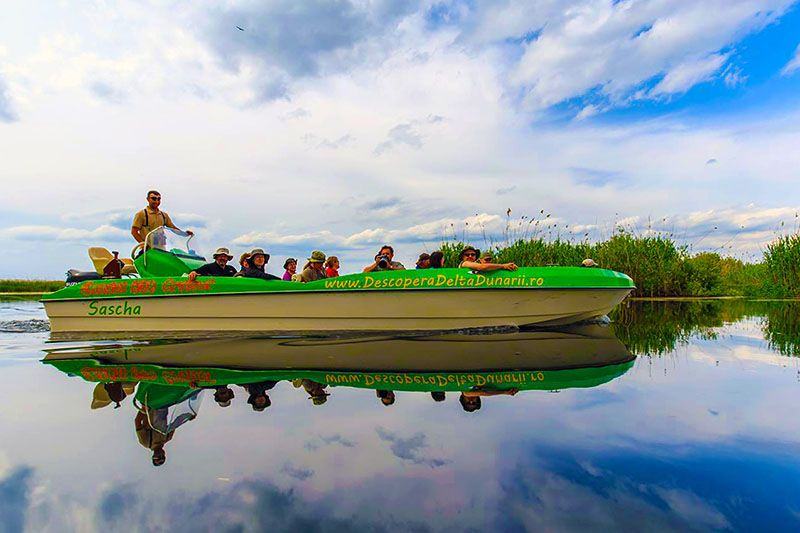
When is the best time to visit the Danube Delta region
The best time to visit the Danube Delta if you want to see this miracle nature garden at its best is May to September. Aug and Sept are peak season since that's when birds are most active getting ready to migrate, and vegetation is lush.
Read our guide about weather in Romania to find out more details about temperatures and what to expect.
As you'll be in wetlands mosquitos can be a nuisance but luckily only for a short time in the mornings and evenings (about half an hour). Nothing a mosquito repellant spray can't handle!
Besides this, and no matter when you visit, here's a short list of clothing and things you absolutely need in the Delta:
- a jacket or raincoat, as most boats are open and there's no refuge in the canals!
- sun hat
- sunglasses and binoculars (optional)
- sun protection
- trousers and long sleeve blouses for early mornings and evenings
How much time should you spend? Well, assuming you arrive in Tulcea the day before, on a day trip will most likely get to see Letea village and forest, and maybe see 1-2 canals and any birds along the way.
This will not be enough to experience the beauty of Delta Dunării. If you want to explore its natural attractions and marvellous lakes, see birds un-rushed, taste traditional food and discover the diverse cultural heritage of the region and local life, you will need at least two or three full days.
Important rules to keep in mind when visiting this area
Of all the nature reserves in Romania, the Danube Delta has the strictest conditions for living and visiting.
Rule no. 1: Respect the nature
Be a conscientious visitor and make sure not to disturb any of the habitats.
You must help preserve the environment and disturb nothing. Some of the beautiful creatures will surround you. Specific bird species, like the great white pelicans (Pelicanus Onocrotalus) which represent 50% of the Palaearctic breeding population, nest on small patches of land on Lake Hrecisca.
Rule no. 2: Navigate responsibly
Boats, especially motorized boats, are not allowed to come near them, on the one hand, not to disturb the birds, and on the other, because of the shallow water in some areas.
Also, remember that no matter how much you want to visit something or take a specific boat route, you primarily depend on the Danube River's level. If it's simply not possible, you need to accept this and opt for the alternative suggested by your host.
Rule no. 3: Fish only in designated areas
It's our favorite activity, too, as the Danube Delta is one of the preferred destinations for pro and amateur fishermen! But do it in the places indicated by your hosts or guide. You might also need a special permit to ensure you are not fishing in prohibited areas or during periods of fish population regeneration.
Outside of areas and periods of prohibition, you may fish for specific types of fish in the catch-and-release regimen and keep no more than one specimen of every kind of fish for yourself. Your guide will offer more specific information depending on the place and time of your visit.
Rule no. 4: Do not camp in visitation areas.
Plenty of sites are equipped with everything you need if you enjoy camping. Otherwise, you must respect the area's ecological integrity and visit from afar and places your guides indicate as safe for wildlife.
Rule no. 5: Keep your distance from protected areas
Access is prohibited on some of the river banks as some species may nest there and to prevent disturbance of wetland habitats and ecological processes.
Your boat drivers, hosts, or guides know best which areas you may admire from afar. Do not insist on getting closer to those strictly protected areas in the Danube Delta!
Places to visit in the Danube Delta
The Danube Delta is the second largest in Europe after the Volga Delta, created by the Volga River, and is a UNESCO World Heritage Site. The biggest city in the vicinity is Tulcea, the administrative municipality of Tulcea County.
The villages in the Delta are in Tulcea County, but not all of Tulcea is on water. Locals refer to them as Delta villages and mainland villages; the county is much more than just the Danube Delta for anyone interested in visiting.
The biggest town in the Delta is Sulina. It is not a large city in the sense you might expect, but you will find restaurants, stores, accommodation, and a beach. It is the perfect place for people looking for a holiday away from the crowded Romanian seaside beaches.
Its glory days were in the 19th century, when it was an important harbor on the Sulina branch, trading with people from Europe and the Middle East.
Some even settled here, making for a diverse population and a cosmopolitan town. Little of the old architecture remains, like the old lighthouse or maritime cemetery, but the ones that do are a testament to Sulina's cosmopolitan days.
The human settlement in the Delta consists of several small towns, such as Sfantu Gheorghe and Chilia, the small village of Mila 23, and remote villages. Some have existed since the beginning, while others are artificial constructions.
An incredible documentary about the Delta's wildlife
Birds and vegetation in the Danube Biosphere Reserve: Home to globally threatened species
So, while the Danube Delta wetlands are home to an impressive variety of bird colonies, including the pygmy cormorant, it is also a prime destination for fishing trips, features wild horses and other rare animals like jackals and raccoon dogs, and showcases a unique local culture with (you guessed it!) its gastronomic wonders.
The Delta marsh vegetation also features floating or fixed islands, vital habitats supporting diverse aquatic flora and fauna.
In summary, about 5,000 species, especially massive numbers of waterbirds of all kinds, share a surface of 5,000 square kilometers, making it one of the most impressive nature reserves.
It is also a favorite staging area for passage birds and a wintering ground for migrating waterbirds from the boreal forests, the tundras, and the steppes.
The Danube Delta is a wildlife sanctuary covering a total area of 5800 square kilometers (2240 square miles) and sheltering more than 5,400 species of plants and animals. The region's humid climate is influenced by countless inland lakes, which, along with floodwaters from the Danube, contribute to its continental climate characterized by limited rainfall.
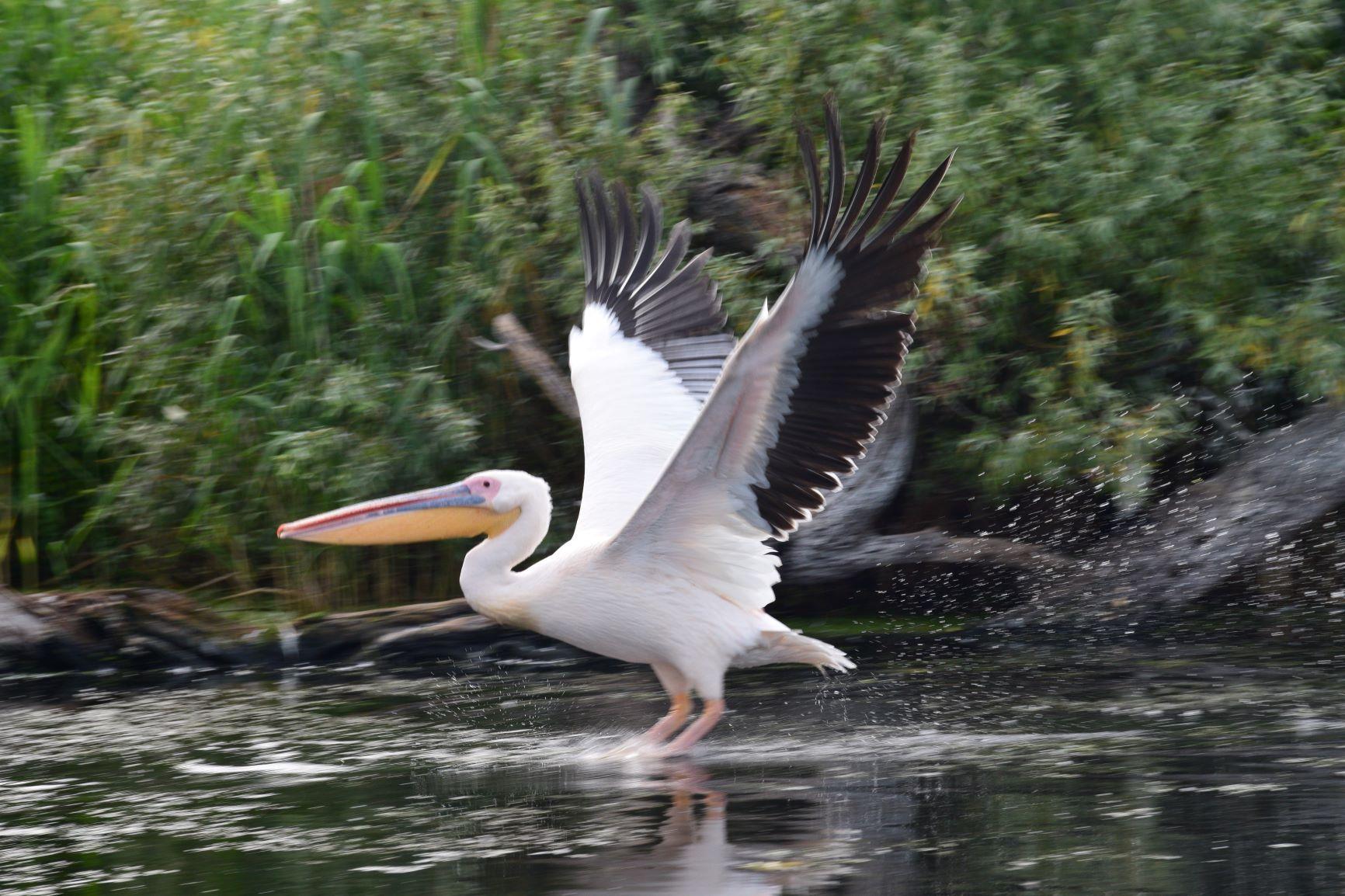
In fact, what makes the Danube Delta so special is its large scale. It is Europe's largest wetland area and hosts the largest colony of pelicans and the largest number of fish species in the country.
However, the species of birds found in the Delta are probably the main reason people visit, especially the popular pygmy cormorant and the Dalmatian pelican.
So obviously, the most popular activity here is the birdwatching tour. The Delta is a halting place for several migratory birds like various species of wild ducks, the purple heron (Ardea purpurea), and the entire world population of red-breasted goose (Branta Ruficollis) flocks here to spend the winter every year.
The most iconic bird in the Delta is the Dalmatian pelican (Pelicanus crispus), while the biggest birds of prey are the white-tailed eagles, which sit on top of the food chain.
Recent climate change and human intervention, like intense drone photography of natural nesting places, have driven exotic birds to the area. For example, a flock of colorful flamingos arrived here in 2022 near Jurilovca and made a home in the dammed and enclosed space, where they feel better protected.
The many existing water habitats have led to massive productivity, with the delta becoming home to an impressive number of freshwater fish species.
The Delta fauna is unique, and even animals thought to have become extinct in Romania, like the beavers, are returning, a very encouraging sign of ecological restoration. There is immense potential for wetland restoration as the numerous lakes included in the network of canals and branches can be re-flooded and once again become part of the Danube River dynamics.
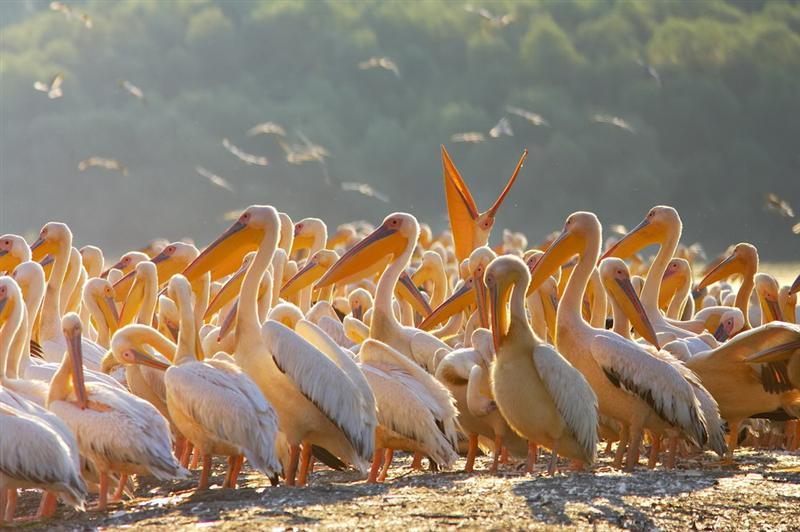
Wild sceneries in the largest remaining natural wetland
There are 12 different types of habitats in the Danube Delta and most of them have preserved their ecological integrity. There are muddy beaches, sandy and rocky areas, dry and wet meadows, unaltered rivers, coastal lagoons, and human settlements among others.
The Danube Delta Biosphere Reserve is the largest European wetland, with reed beds and fixed and mobile sand dunes. Reed plants along the waterline and floating reed islands are familiar sights in the delta. The waters of the Danube are beautifully decorated with water lilies (Nymphaea alba), making even your dullest photos look like Danube Delta stock photos. Beauty at every turn!
There is also a vast range of shrubs like blackthorn, hawthorn (Crataegus monogyna), rosehip, alder buckthorn, common buckthorn, sea buckthorn, French tamarisk, and vines to be found in the largest continuous marshland in Europe.
The aquatic flora is just as fascinating, as the higher ground supports stands of Salix, Populus, Alnus and Quercus. Sandy areas are covered with feather grass Stipa sp. and other steppe species. Forest elements are best observed in the depressions between the dunes, representing the area's unique climate. Its trees include oak, ash, elm, aspen, linden, and willow.
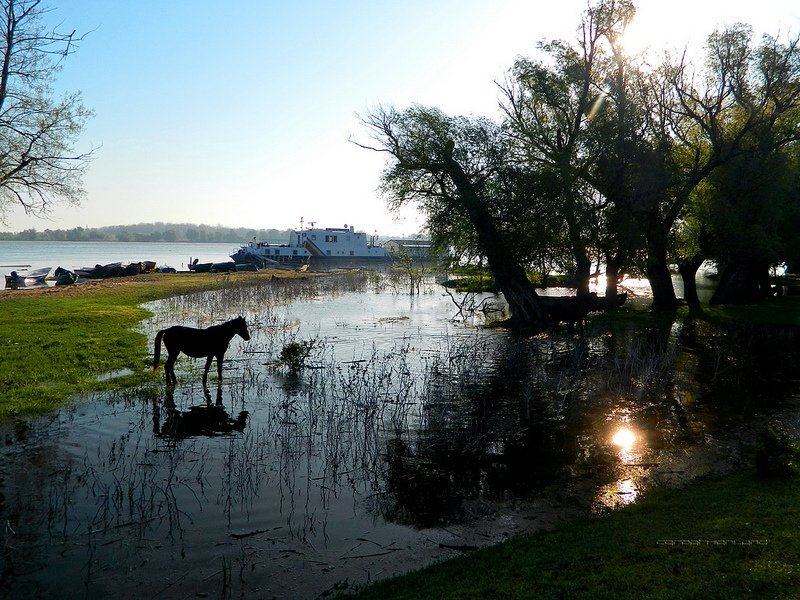
Wildlife in the Danube Delta
Remember that the Danube Delta is a vast swampland full of canals, vegetation, and patches of land. It is the last major remaining wetland in Europe and the main reason it is on the UNESCO World Heritage list.
Official maps of where bird flocks nest do not exist, and what usually happens is that the network of locals and fishermen communicate with guides and Danube Delta personnel on bird and fauna movements. Tour itineraries are planned based on this in the mornings, so we recommend hiring a local guide to navigate the Delta and see some wildlife.
- A rare site for many world travelers: the wild horses in Letea forest. It is incredible to see animals our mind is trained to see as domesticated in their natural habitat, roaming free, and in huge numbers –now almost 2000. As far as day trips go, this is probably one of the most impressive.
The European mink mustela lutreola can still be seen in the Danube Delta, making up for one of the largest remaining part of the world's population. In the past, it used to be found in other parts of the country, but the only viable habitat remains that of the unaltered rivers and surrounding lakes of the Delta region. Another interesting species you can spot amid the floating islands of decaying vegetation is the wild cat Felis sylvestris.
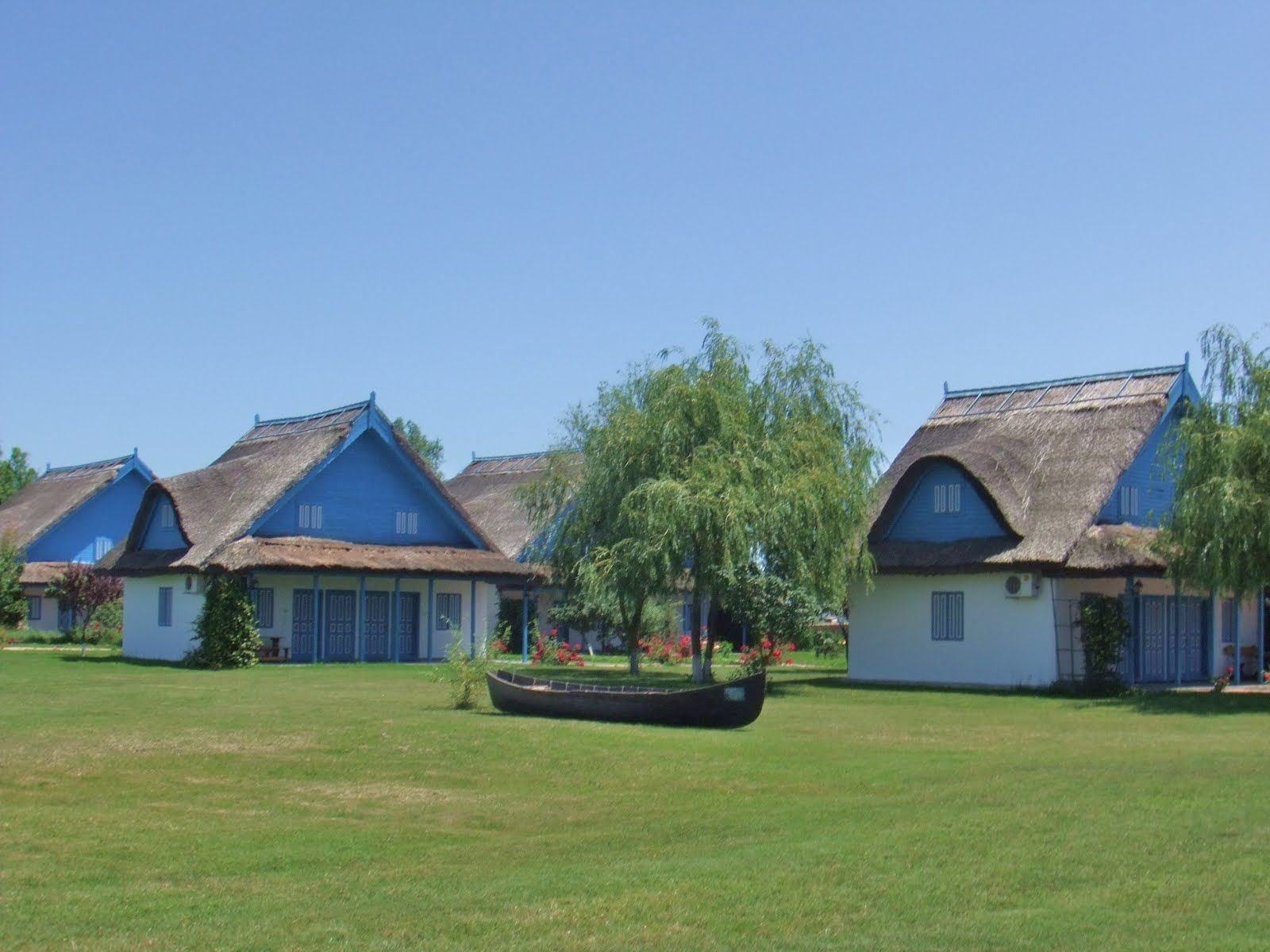
Conservation efforts
The Danube Delta is a protected area, and several conservation initiatives are in place to preserve its unique ecosystem.
Established in 1990, the Danube Delta Biosphere Reserve is a UNESCO Biosphere Reserve that covers an area of approximately 4,170 square kilometers (1,603 square miles). Managed by the Danube Delta Biosphere Reserve Authority, the reserve aims to protect the delta's natural resources and promote sustainable development.
Several NGOs and organizations, such as Rewilding Europe, are actively working to restore and protect the delta's wetlands and wildlife habitats. These efforts are crucial in maintaining the delicate balance of the delta's ecosystems and ensuring this natural wonder remains unspoiled for future generations.
A unique local culture and cuisine
The delta is in the Romanian region of Dobrogea, historically inhabited by various ethnic groups, including Lipovan Russians, Turks, Tatars, Ukrainians, and Bulgarians, in addition to Romanians.
The houses painted in white and bright blue represent the area, as are the fishing utensils adorning each front yard, the wooden boats, and the fish-based gastronomy. Local people here live harmoniously and respect each other's traditions and religions.
Boat trips, fishing, and tasting the local cuisine in any of the villages surrounding the visited routes go hand in hand, and you will thoroughly enjoy them. You can also have the best time watching the stunning sunrises and sunsets and visiting the many Danube Delta lakes.
Accommodations in the area range from local villas, where your hosts cater to your every need, including taking you out on their wooden boats and guiding your journey, to fancy resorts with expensive and impressive restaurants, swimming pools, and guided tours with modern boats from local partners. Any tourist can find accommodation suited to their taste and budget.
Speaking of taste, fish soup (storceag) is something you cannot leave the delta communities without trying. If you can join some fishermen on a small patch of land for a bowl of soup, the experience will be even more authentic.
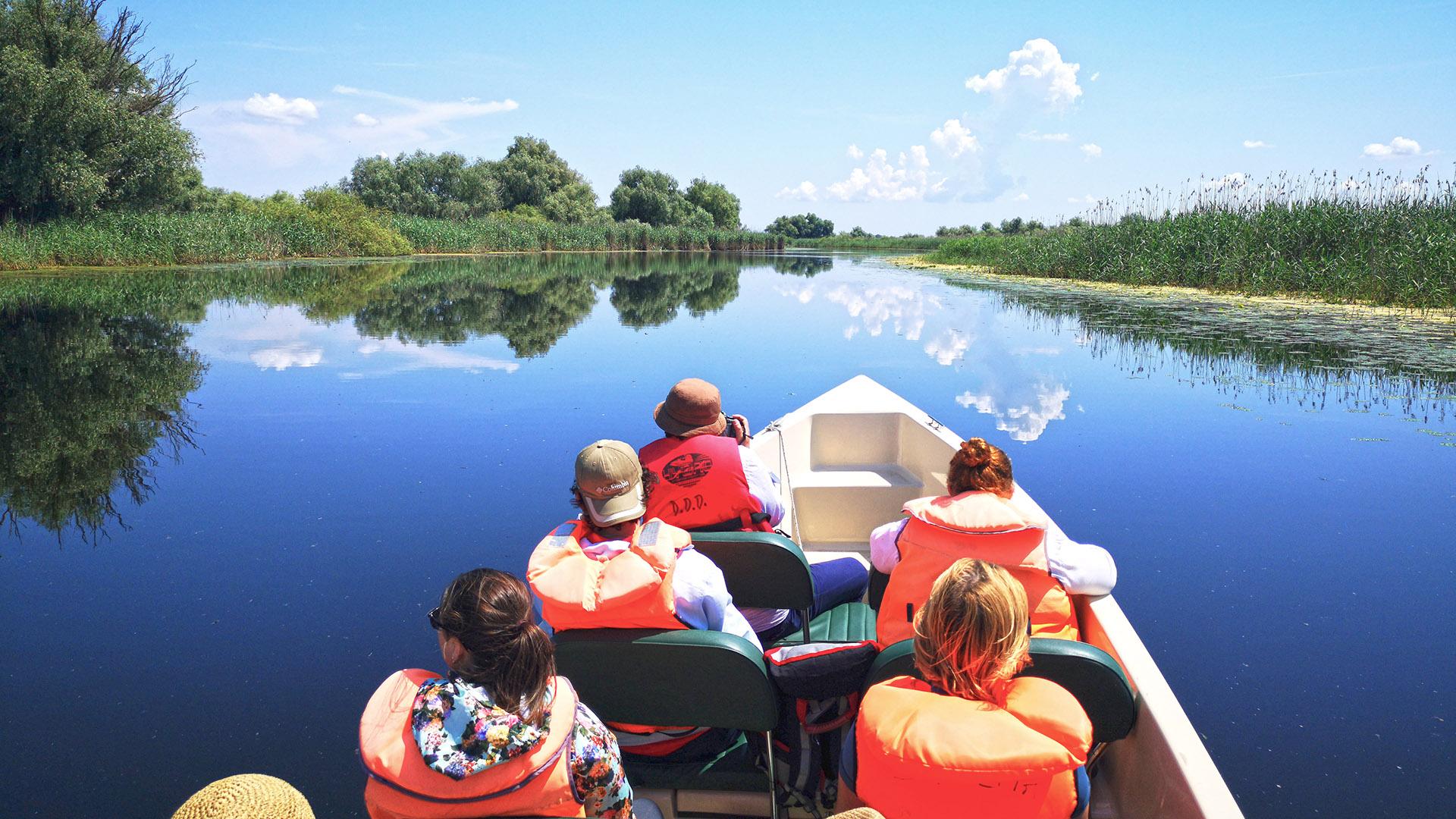
Safety and precautions
Visitors to the Danube Delta should take several safety precautions to ensure a safe and enjoyable trip.
The delta is home to various wildlife species, including snakes, spiders, and other animals that can act as a threat to humans. It's advisable to wear protective clothing, such as long sleeves and pants, and to stay on designated trails and paths.
Additionally, the weather in the delta can be unpredictable and change quickly, so it's essential to be prepared for sudden shifts in conditions. Bringing insect repellent and sunscreen is also recommended to protect against mosquitoes and the sun.
By taking these precautions, you can fully enjoy the natural beauty of the Danube Delta while staying safe.
Accommodation and dining
The Danube Delta offers several options for accommodation and dining, catering to various budgets and preferences.
Visitors can choose to stay in the town of Tulcea, located at the tip of the three channels, or in one of the other villages and towns scattered throughout the delta. There's something for everyone, from budget-friendly guesthouses and hostels to luxury hotels and resorts.
Dining in the Danube Delta is a treat, with several restaurants and cafes serving traditional Romanian cuisine, including fresh seafood and local specialties. Don't miss the opportunity to try some local wines and spirits, such as tuica and palinca, which add a delightful touch to your culinary experience.
Whether you're looking for a cozy guesthouse with home-cooked meals or a luxurious resort with gourmet dining, the Danube Delta has something to offer every traveler.
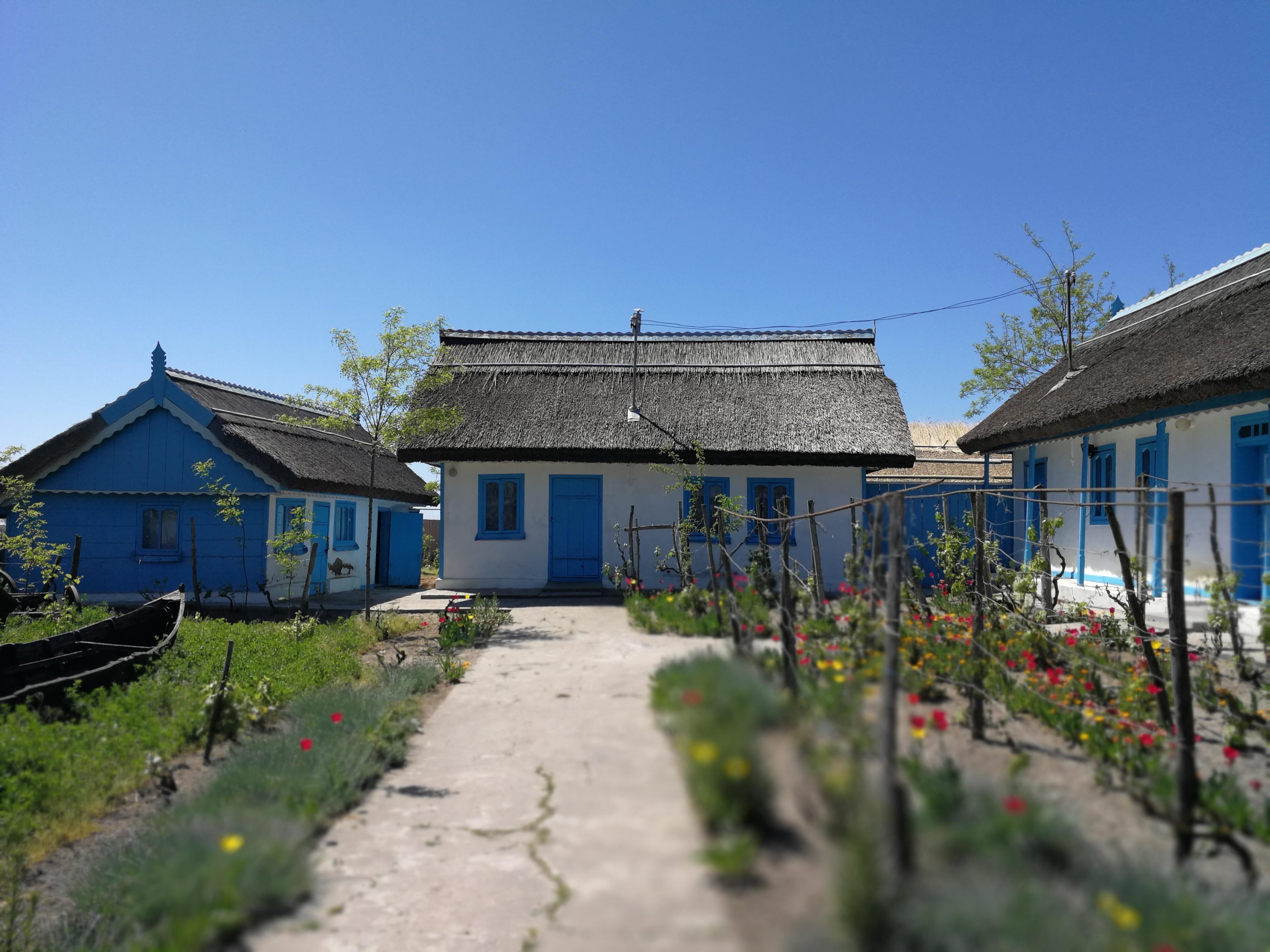
Where the Danube meets the sea
Gura Portitei is quite a unique location, as it is a small resort located precisely where the Danube meets the sea, offering tourists both the beauty of the delta and the immensity of the Black Sea in one place. They can swim in the sea, lie on the beach, take a water bike, and pedal on the channels on the other side of the resort.
Once a week, the resort managers will have a group of Lipovans over, dressed in traditional clothes, to perform traditional old-style Russian songs by a campfire. The restaurant there serves fresh fish caught by the resort employees.
This location is very appreciated by people looking for an unusual seaside destination which is away from the crowds and the noise of the Romanian Black Sea resorts. The water here is seen clearer, the beaches are cleaner as the number of tourists is lower and it is easier to manage the area and preserve it.
Discover the Tulcea mainland
As mentioned before, the Danube Delta is in Tulcea County, but Tulcea is much more than just the Danube Delta. This being said you can have some great experiences on the mainland as well.
One of the most impressive of them is the Enisala fortress.
The only medieval fortress in the area dates back to the 1300s and it is nothing less than impressive. Although it is not 100% who built the fortress and what purpose it served - was it the Genoans to store riches, the Tattars to have a military outpost or the Byzantines, as the fortress shows signs of having gone through numerous transformations, it was surely used in the defense network of the Romanian Country in the Middle Ages.
The area around it is beautiful, making for a delightful visit. However, it is difficult to get there without a private car.
And since you already made the 4-hour journey from Bucharest and rented a car, make sure to check out the Macin mountains in Tulcea County. They are the lowest in Romania but very impressive, with their emerald lakes and rocks being older than the dinosaurs.
When you visit the Danube Delta region, you do so because of the massive delta land and the natural experience.
The river Danube plays a crucial role in shaping this unique ecosystem. While the local community is diverse and has a vibrant culture, the area was not spoiled with intricate constructions. Every time your boat takes a turn, you get to see something beautiful and unique, a nature lovers' paradise.
Places to visit
Related tours
-
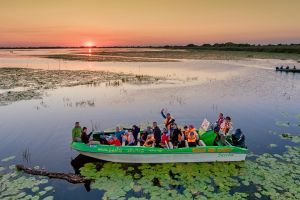
The Danube Delta Tour: Nature's Wonder
Start from: Tulcea
-
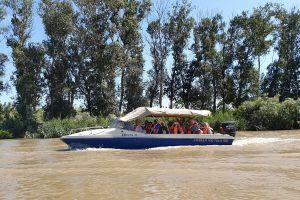
Danube Delta Tour from Bucharest
Start from: Bucharest
4 times a year we prepare a newsletter with local stories, places and our special insights about Romanian culture and local life that will inspire you to visit our country and have an authentic local experience. Would you like to get it?
